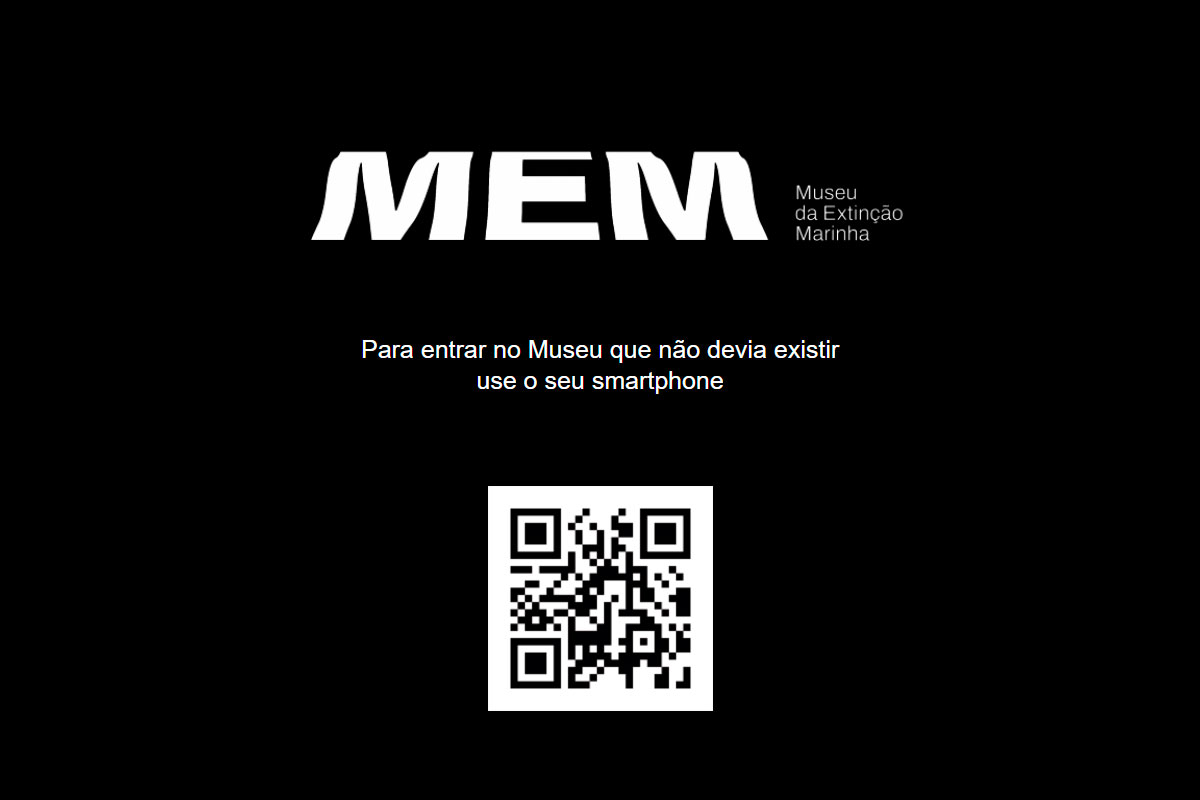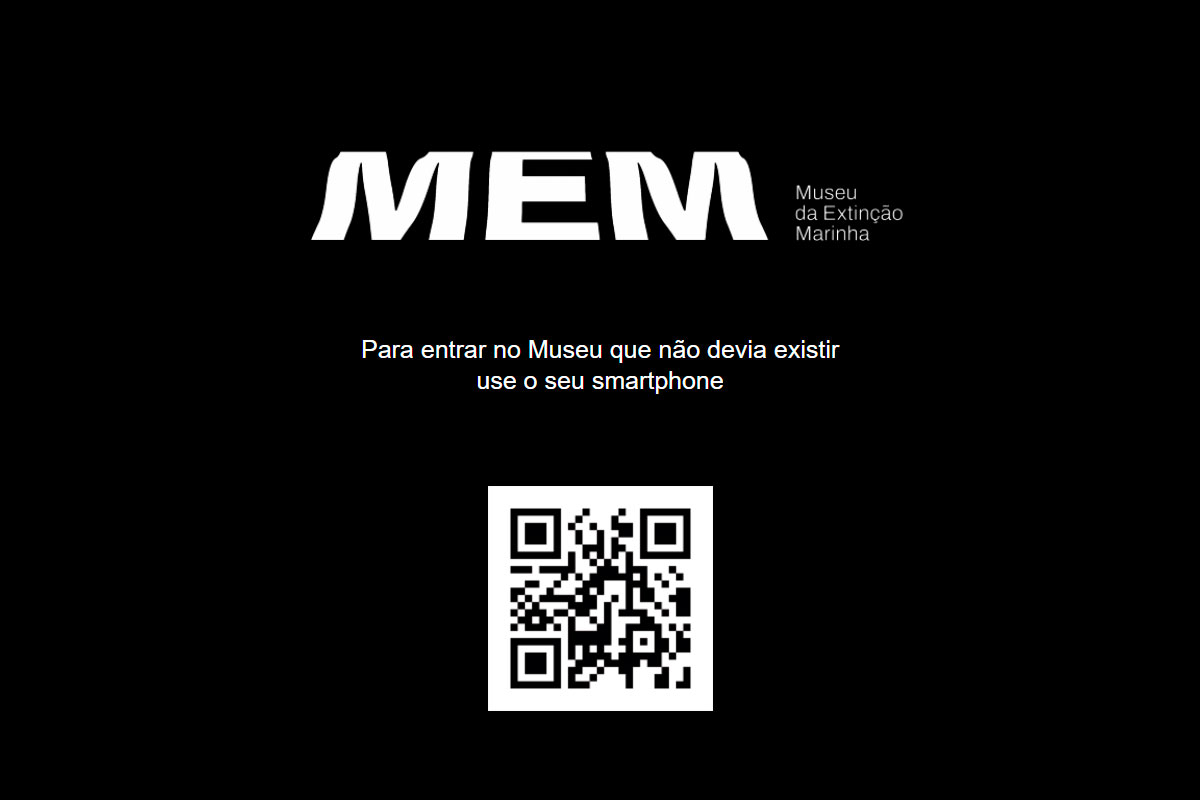Portugal is the only country in the world to have a “museum that shouldn’t exist”. Which one? The Museum of Marine Extinction . We are talking about a museum totally virtual and totally dedicated to preservation of Portuguese marine protected areas. Taking into account that climate change is, and will continue to be, increasingly, on the agenda and given the urgency of doing something, this topic could not be more current.
Highlights:
Totally virtual, the museum can be visited by smartphone through the QR Code on totems installed in various parts of the country;
The work, created by the architect Ricardo Bak Gordon, intends to show the importance of preserving marine protected areas in Portugal.
Portugal will have, as of today, what is probably the most controversial museum in the world: the Museum of Marine Extinction (MEM). The museum that shouldn’t exist, designed by the architect Ricardo Bak Gordon for the BiodivAMP scientific project, intends to show the importance of preserving the marine protected areas in Portugal and all the biodiversity that inhabits them. Completely virtual, the MEM can be visited by smartphone by reading the QR Code that can be found on totems installed in various parts of the country.
The MEM – Museum of Marine Extinction – presents the natural wealth of marine protected areas (MPA) in Portugal, through their most precious resources, which are the species that inhabit them, and appears in a context of awareness and alert to the urgent need to protect these places, as well as the species that inhabit them. inhabit.

O Museum of Marine Extinction
Nicknamed “The Museum that shouldn’t exist” , as it anticipates marine extinction as a likely but still avoidable reality, the MEM can only be visited virtually. Only with a smartphone will it be possible to read the QR Code, which is the entrance to the museum, which is on the totems installed in different parts of Portugal. By entering virtually, the visitor will know which marine species are in danger of extinction in that area and what they can do to avoid them, such as the Peixe-Lua in Berlengas, the Blue Shark in the Azores, the Cavalo-marinho in Arrábida, among many others.
After having been able to visit the MEM on the beaches belonging to the MPA – such as Ofir, Zambujeira and Figueirinha – and in 6 marine protected areas that coincide with some of the most touristic areas in the country, making the human presence a factor of destructive pressure, it is currently possible to visit “The Museum that shouldn’t exist” at Aquário Vasco da Gama (Lisbon), at Alegro Alfragide Shopping Center and at Alegro Setúbal Shopping Center .
“It is of utmost urgency to resolve and prevent the degradation of the oceans and the decline of biodiversity caused by man, if we are to reverse self-destruction. People must know, value and protect the natural wealth of our marine areas, which are essential for regulated ocean management, or we risk losing all this natural capital. Therefore, we believe that, by informing the Portuguese about this topic, we can all have a more active role in the conservation of these places”
, says Gonçalo Silva, ISPA researcher and project leader. Ângela Morgado, executive director of the ANP|WWF, warns that “without the our action and prevention, one day these habitats and species will only be seen in museums and the MEM will no longer be utopian and virtual”
.
According to the project’s architect, Ricardo Back Gordon, “In recent years, in parallel with the pandemic that has spread to all over the planet, there were countless natural catastrophes that made evident the highly unstable condition of the planet. It has long since ceased to be a future problem. Whatever the contribution, a wake-up call to stop the planet’s degeneration is indispensable. Therefore, Bak Gordon wanted to join the WWF, and contribute to drawing attention to the safeguarding of such sensitive ecosystems that are at effective risk of extinction.”
Climate change, loss of habitats, among many other factors, are causing a decline in biodiversity, and it is therefore necessary to ensure effective management of marine protected areas to protect marine habitats, reduce pressure on species with commercial interest and provide refuge for more sensitive species.
The Museum of Marine Extinction is a creative idea of the NOSSA agency, it is a project led by the ISPA–Institute University and MARE, and brings together specialists from Naturalist, ANP|WWF, CCMAR, Esposende City Council, EcoAlga, Polytechnic Institute of Leiria and Funchal Natural History Museum.
Para to enter the museum just access the link: https://mem.areasmarinhasprotegidasportuguesas.org/
About BiodivAMP
BiodivAMP is a project to develop tools for monitoring and protecting biodiversity in Marine Protected Areas along the Portuguese coast. It is financed by the Fundo Azul program, within the scope of the Notice for Monitoring and Protection of the Marine Environment of the General Directorate of Maritime Policies, under the Ministry of the Sea; and has ISPA, MARE, CCMAR, Ecoalga, Esposende Municipal Council, Funchal Natural History Museum, Naturalist and the Polytechnic Institute of Leiria as other funders and partners.
Other interesting articles:
Carris Museum reopens today with news
Once Upon a Try: Online exhibition about inventions and discoveries is available on Google Arts and Culture
Google shows how the world has changed in Google Earth with new tool


